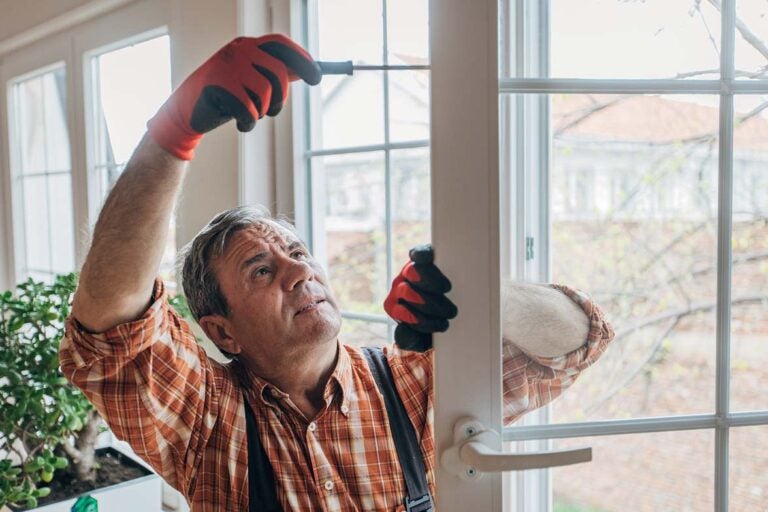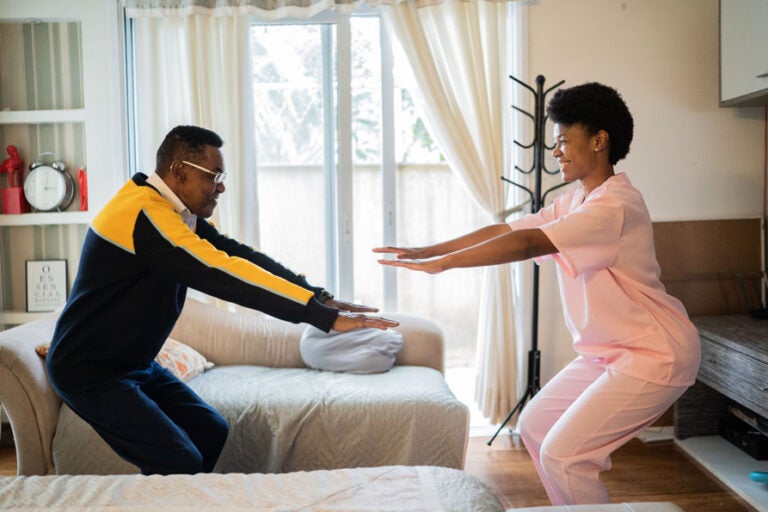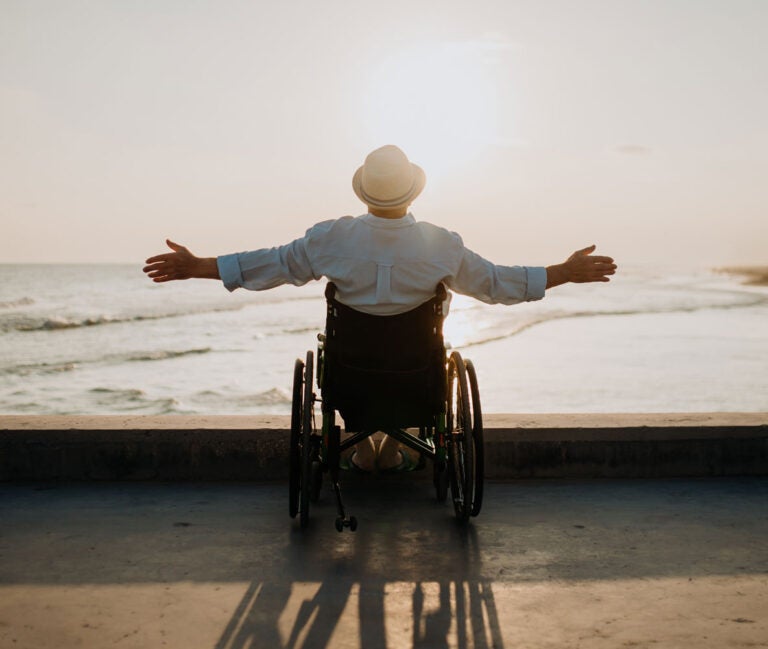Spending retirement in the home you’re accustomed to sounds like a great plan—and it can be if you’re prepared. As you age, certain everyday things around the house can become more difficult. To make staying in your home comfortable and safe, you may need to make some alterations. These home improvement tips will give you some ideas for what’s possible and what you might not be thinking of.
Before You Start
Cristina Miguelez, a remodeling specialist at Fixr, a home remodeling information website, says to remember that everyone is different, and there is no one-size-fits-all for staying in your home. “Functionality is the most important factor when making these modifications, so pay attention to your own needs, priorities, and preferences, and design your aging-in-place remodel so that it adapts perfectly to your situation.”
Determine any current or foreseeable issues like trouble grasping and turning knobs, clunky steps or transitions between rooms, or difficulty getting into the bathtub for your shower. Miguelez says to write down any issues you have during day-to-day activities to identify specific problems.
To help kick off your thinking, here are seven common home improvement tips to help you be more at home comfortable as you age.
1. Widen Doorways for Improved Access
Any doorways narrower than 32 inches may need to be enlarged to accommodate a mobility device like a wheelchair. “Generally, you’d replace the existing frame, add drywall, add insulation, and paint it. And you’ll likely pay between $400 and $600 a doorway, especially if there is electrical involved,” says Jen Stark, founder of Happy DIY Home, a gardening and home improvement blog.
2. Upgrade Bathroom Features for Ease and Safety
“Bathrooms are notoriously dangerous for older adults due to potential fall risks,” says Lakelyn Hogan, Ph.D., a gerontologist and caregiver advocate at Home Instead, the world’s leading provider of in-home care services for older adults. Adding grab bars near showers, bathtubs, and toilets is a simple way to prevent falls and other accidents.
Installing a toilet seat riser can also aid in getting on and off the commode easier.
As for the shower, a fold-down shower seat incorporated into the existing shower’s layout will provide function and safety without the need for a hospital-style shower chair.
“You should also consider an ADA-approved, non-slip floor with a curb-free shower, as removing steps will provide extra safety, and less effort will be required to walk into the shower area,” says Miguelez.
3. Adjust Your Countertop Height for Accessibility
Regular counters are 34-inches off the floor. So, installing counters and cabinets at a more accessible 30-inches can make it easier to prepare food if you’re in a wheelchair or mobility scooter. According to Stark, to remodel 30 linear feet of space, you’ll want to plan for at least $5,000 for changing counter heights in your kitchen.
4. Replace Your Flooring for Safety
Falling is a common cause of senior injuries. Look at the flooring you have and ways it can make a fall less likely and less severe if it happens.
“Linoleum and vinyl can give you more traction than hard stone flooring. Cork and bamboo are also popular, and they can be more forgiving with falls,” says Stark. You’ll pay between $3.00 and $4.00 per square foot for linoleum or vinyl flooring. Cork costs roughly $5.00 per square foot and bamboo, $5.00 to $7.00.
5. Address Stairs and Steps
Another question you’ll want to answer is how difficult it will be for you to get up and downstairs in the future. For steps going from room to room, you can install a ramp for easier access. And for stairs, you might need a stairlift.
“Most stairlifts are designed for standard straight staircases, but there are others made for staircases with curves and platforms. Also, no matter which stairlift you choose, they all come with features like safety belts, folding rails, and swivel seats,” says Miguelez.
Alternatively, you may want to consider relocating high-use rooms, like your bedroom, to the first floor.
6. Update Lighting for Better Visibility
“Inadequate lighting is a safety hazard, and high fixtures often pose a problem for seniors with shoulder problems who have difficulty changing burned-out bulbs,” says Hogan. Upgrading to LED bulbs not only provides good lighting, but such bulbs typically have a longer service life. ”
Also, consider adding nightlights in walkways and bathrooms to illuminate dark spaces where falls could occur,” Hogan says. Motion-activated nightlights work well.
7. Consider New Doorknobs
“Arthritis can make turning traditional round doorknob handles more difficult,” says Hogan. If you or your partner have trouble opening and closing interior doors, an inexpensive solution is changing doorknobs for lever handles that can easily be opened even with an elbow.
A carpenter or handyman can change all your knobs out in a day or so depending on the size of your home, and you’ll pay $25-$50 per hour plus the costs of the levers you choose.
Many of these home improvement aging upgrades will help seniors maintain their independence and allow them to age in place. “Also, most of these items can be made indistinguishable from normal home fixtures,” says Miguelez.
Home Improvement Tips You Can Put in Place Without Renovating
Some other things Hogan recommends that don’t require remodeling but can be important include:
- Keep heavy or bulky items within reach like pots and pans and the toaster in lower cabinets or drawers
- Remove tripping hazards like throw rugs.
- Use power strips to run cords behind furnishings or tape them to the floor out of the way.
- Use rubber mats in bath or shower to prevent falls.
- Make sure walkways are smooth without bumps or trip hazards.
No matter which home improvements you’re ready to tackle, it’s a good idea to get several estimates and check references before hiring a contractor to help you.
Seniority is published by Finance of America Reverse LLC. The views expressed in this publication are those of the author alone and do not necessarily reflect the views and opinions of Finance of America Companies. This article is intended for general informational and educational purposes only and should not be construed as financial or tax advice. For more information about whether a reverse mortgage may be right for you, you should consult an independent financial advisor. For tax advice, please consult a tax professional.




